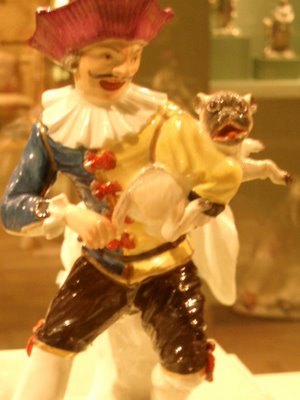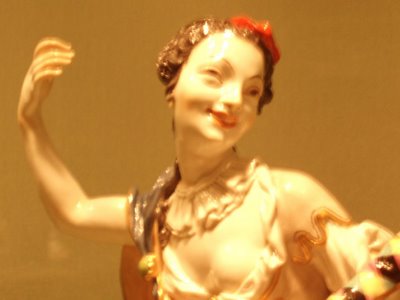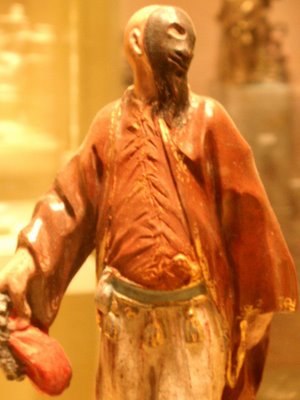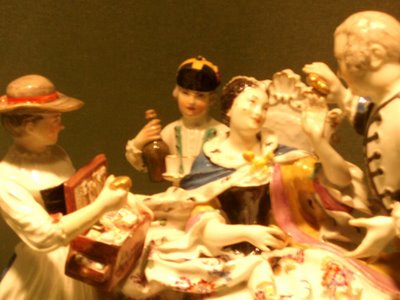 1740. Harlequin and Pug as Hurdy-Gurdy. His Face!
1740. Harlequin and Pug as Hurdy-Gurdy. His Face!
 c.1750 Italian. The Alchemist & his Assistant.
c.1750 Italian. The Alchemist & his Assistant.
 Orientals with an Artichoke as a Perfume Burner. Model by Johann Friedrich Luck. German, Frankenthal, ca. 1766.
Orientals with an Artichoke as a Perfume Burner. Model by Johann Friedrich Luck. German, Frankenthal, ca. 1766.
 Indiscreet Harlequin. Model 1740. The shoes!
Indiscreet Harlequin. Model 1740. The shoes!
 The Muse Thalia with Infant. Model after Johann Joachim Kändler (1706-1775).
The Muse Thalia with Infant. Model after Johann Joachim Kändler (1706-1775).
 Pantaloon. Meissen. Böttger period. (1710-1719).
Pantaloon. Meissen. Böttger period. (1710-1719).  The Trinket Seller. Meissen. After a model 1738. Johann Joachim Kändler (1706-1775).
The Trinket Seller. Meissen. After a model 1738. Johann Joachim Kändler (1706-1775). If you are interested. Here is an overview of the tumultuous beginnings of Meissen. It goes something like this:
Chinese porcelain had been coming into Europe since the 16th century. By the beginning of the 18th century certain Europeans were enamored– in love & going crazy for porcelain but no one in Europe knew how to make it. King August II of Germany decided he wanted to be the person to figure out how to do it. He did what he could. Johann Böttger was an apothecary’s assistant in Berlin who came to Saxony. Johann claimed he had the secret to making gold. The King decided Johann must then be able to make porcelain, so in 1705 he had him imprisoned in a fortress in Meissen until he figured it out. Johann wasn’t particularily happy about this. He had a sign put above his door which said something like: I used to make gold and now I make pots.
After several years, Böttger finally figured out how to make a dark red colored porcelain-like material. A step in the right direction so they set up a factory in 1710. Johann had a bit of an epiphany around 1713 and tried making porcelain out of his hair powder which worked. Everyone was happy although I’m not sure what happenend to Johann.
No comments yet



